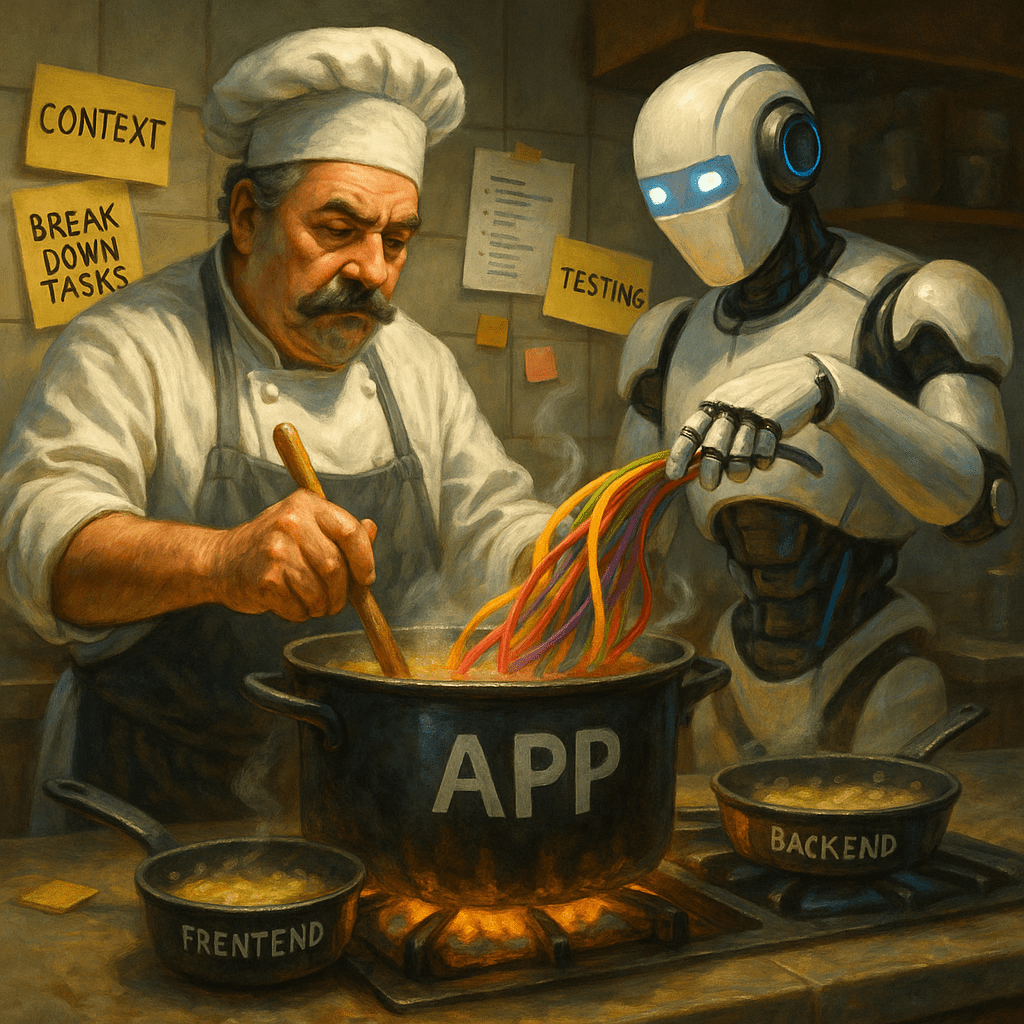
As AI systems become increasingly sophisticated and integrated into our development workflows, we’re discovering fundamental principles that govern effective human-AI collaboration. Whether you’re working with coding assistants, design tools, or any AI-powered system, these principles can dramatically improve your results and reduce frustration.
The most important mindset shift is recognizing that you’re working with an artificial intelligence, not just a sophisticated autocomplete system. This means applying the same communication principles you’d use with any intelligent collaborator.
When you ask a colleague to “build me a day planning app” and walk away, you shouldn’t be surprised if what they deliver doesn’t match your vision. The same applies to AI. The quality of your output is directly proportional to the clarity of your input.
AI systems, like humans, have their own biases based on training data. Without clear direction, they’ll make assumptions that may not align with your intentions. The solution isn’t to blame the AI—it’s to communicate more effectively.
One of the biggest mistakes developers make is asking AI to solve everything at once. Instead, approach complex projects in manageable phases:
Before jumping into code, ask your AI to help generate comprehensive requirements based on your initial specifications. AI can often augment your thinking by suggesting best practices and edge cases you might have missed.
For example, instead of immediately requesting code, provide any relevant transcripts, discussions, or initial specifications and ask the AI to create detailed project requirements first.
Once requirements are clear, request a high-level implementation plan. This should outline what will be built for the UI, what APIs will be needed, and how different components will interact. You can review and refine this plan before any code is written.
For full-stack features, consider implementing the backend API first, then the frontend. This ensures a clear contract between layers and reduces the degrees of freedom in subsequent steps.
This phased approach prevents the frustrating scenario where the AI delivers working code that uses the wrong framework, follows different architectural patterns, or makes assumptions that don’t fit your maintenance requirements.
Code generation costs almost nothing—just a few API calls and 5-10 minutes of time. This fundamentally changes how you should think about the development process.
Many developers make the mistake of accepting mediocre generated code and then trying to fix it piece by piece. Instead, if the initial result doesn’t meet your standards, simply regenerate it. Don’t be attached to code that isn’t working for you.
If you need 3-4 iterations to get a solid foundation, spending 20-30 minutes upfront can save you hours of manual coding. Remember, you would have taken breaks anyway during manual development—coffee breaks, YouTube videos, or just thinking time.
The key insight: generated code has no inherent value. It’s only valuable if it serves your needs. Be willing to throw it away and start fresh.
When evaluating AI-generated code, apply the same standards you’d use for a colleague’s pull request. Ask yourself: if a team member submitted this exact code, would you approve it?
Don’t reject code simply because it’s different from how you would have written it. Focus on whether it:
Minor differences in naming conventions or code organization aren’t grounds for rejection if the code is otherwise sound. You can always refactor later using your editor’s tools.
Many developers fall into the trap of expecting AI to read their mind and produce code exactly as they envisioned it. This is unrealistic and counterproductive. The AI should match your requirements and technical specifications, not your unstated preferences.
The completeness of your task specification directly impacts the quality of results. To get useful, integrated code, you must provide sufficient context:
The more context you provide, the more consistent and appropriate your results will be. AI systems are surprisingly good at understanding and following project patterns when given sufficient information.
Effective AI collaboration is iterative, but it should converge toward your goals rather than wandering aimlessly. The step-by-step approach prevents the common problem where fixing one issue introduces new problems elsewhere.
When you have clear requirements and implementation plans from earlier phases, subsequent refinements tend to stay on track. Each modification brings you closer to the target rather than introducing new deviations.
Here’s how these principles work in practice:
Working effectively with AI requires treating it as an intelligent collaborator while understanding its unique characteristics. By breaking down complex tasks, providing comprehensive context, and maintaining appropriate standards, you can achieve remarkably productive human-AI partnerships.
The goal isn’t to make AI think exactly like you—it’s to harness its capabilities while guiding it toward outcomes that serve your real needs. When you master these principles, AI becomes a powerful force multiplier rather than a source of frustration.
Remember: the future belongs to those who can effectively collaborate with artificial intelligence, not those who can work around its limitations.
© 2025 angen.ai. All rights reserved.